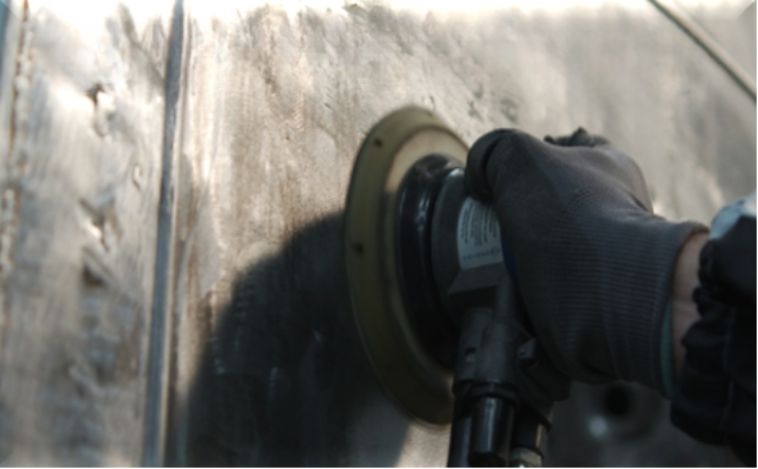When repairing a vehicle, it’s common to find bare metal as a result of the sanding required for repair operations.
Bare metal must be covered with a protective coating to prevent corrosion forming between its surface and the paint film. The question then is which product is more appropriate: a reactive primer (etch primer) or an epoxy primer?
Reactive primer
Reactive primers are two-component products, generally composed of phosphoric acid and a corrosion-inhibiting pigment (e.g. zinc). The metal surface must be thoroughly cleaned before application to obtain the desired protection.
The acid ‘attacks’ the steel, allowing the pigment to bond firmly to the surface. The dry film is generally about 0.5 mil thick. You cannot paint directly on a reactive primer or apply polyester putty or epoxy primer.
However, once the putty has been applied to the metal and sanded, the reactive primer will have excellent mechanical adhesion if applied over it.
Finally, the reactive primer must be covered with a two-component urethane primer, which will have chemical adhesion to the reactive primer.
Epoxy primer
Epoxy primers also have two components and do not require sanding before subsequent coats are applied, so they are in fact sealers. The area must also be thoroughly cleansed before application. Here the adhesion is created by the powerful adhesion of this to the surface.
As a general rule, the film thickness will be approximately 1.0 mil in automotive refinish products. You can paint directly over the epoxy primer, apply a urethane primer if you want a thicker film to cover minor imperfections, or apply polyester putty as required.
Some car manufacturers will require epoxy primer to be applied to metal parts before sealant is applied in order to honour their warranties.

So which one should you choose?
It is often a question of preference and the needs that are required for the repair.
Reactive primer is economical, easy to use, offers excellent adhesion, good corrosion protection and quick drying.
However, it is compulsory to cover it with a urethane primer to complete the anti-corrosion protection, and you cannot paint over it or apply epoxy putty or primer. To protect metal, we use one or the other, never both.
Epoxy primer is more expensive and requires induction time in some cases. So you have to wait a certain period of time after mixing before you can apply it.
It is also easy to use, offers excellent adhesion and corrosion protection, but takes longer to dry. We therefore need to plan our application so as not to affect the cycle time. It can be covered with a multitude of products.
It’s up to you to determine your needs and choose the best option.



